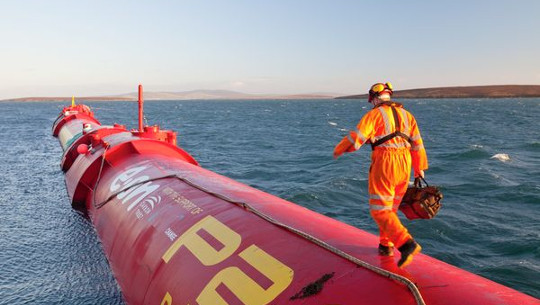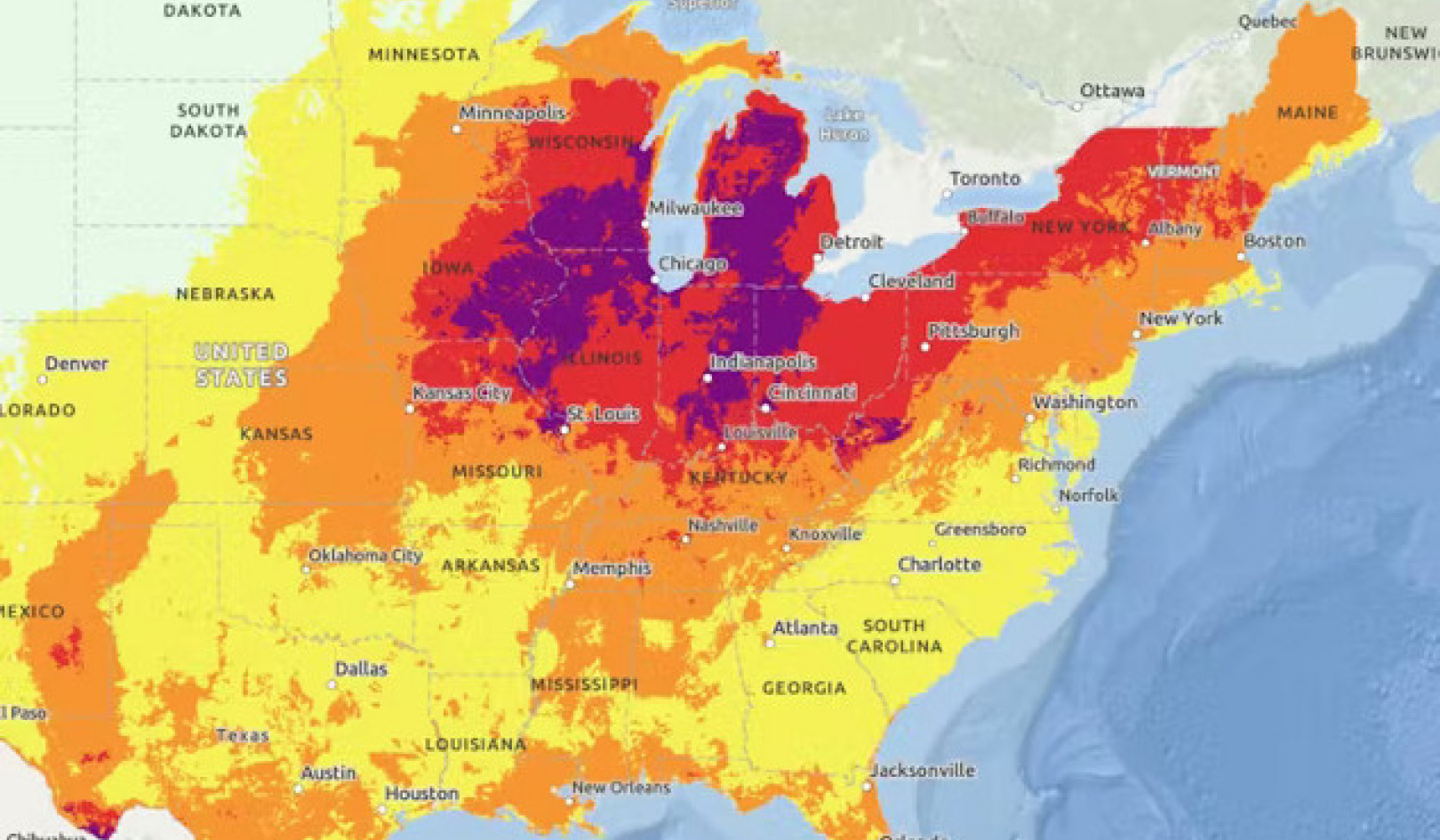
The announcement that a pioneering wave farm off Perth has started generating electricity is an exciting and welcome development. The project, developed by Fremantle-based Carnegie Wave Energy, features two buoys, 11 m in diameter, below the sea surface (with a third to follow).
The buoys are now generating electricity and supplying it to the nearby HMAS Stirling naval base. With this full scale plant now working, is an explosion in wave power imminent?
Australia is undoubtedly blessed with abundant wave energy. But as well as the size of the resource, it is important to consider how wave energy “adds up” in the context of Australia’s total power demand. Here Australia does extremely well – it is difficult to nominate another country which has so much wave energy relative to its population size. In comparison to other renewables, wave energy is attractive as it is a relatively dense energy source, and easy to predict.
However, there are also substantial challenges. Some estimates put wave energy 15 to 20 years behind wind energy on the development curve – and as yet there has been no convergence on which type of wave energy device(s) is best.
This is indicated by the fact that a recent study identified 147 different devices under development worldwide (including several in Australia) – although only a couple have reached a similar stage of development to Carnegie’s.
This proliferation of devices seems unlikely to be whittled down just yet – the US government is conducting a prize competition this year to encourage the development of new prototypes. Set against this is the difficulty of reaching the stage of full-scale testing and commercialisation. This has been dramatically indicated by the struggles of leading players in the UK wave energy industry, such as Pelamis (bankrupt) and Aquamarine Power (downsized) over the past year.
Challenging Seas
What are the challenges that these technologies seek to overcome? Like other renewables, the presence or absence of a carbon price or other measures to level the playing field for cost of power are relevant. However, there are also some problems that are unique to wave energy.
First, wave energy, while predictable, is tricky to convert into electricity. The frequency at which the waves oscillate is critical, and a device must be able to be tuned to operate efficiently at different frequencies. However, at any one time waves with a range of frequencies are present, and this distribution changes over periods of hours or days.
Second, extreme loads in the ocean (due to large waves) are much larger than the loads in normal operating conditions. The energy in stormy seas may easily be 100 times greater than in average conditions. Therefore, the costs may be driven by the need for a device that can withstand extremes, but the revenue is dictated only by the average conditions.
Third, converting the absorbed energy to electricity entails the relatively low-frequency wave oscillations being converted into much higher-frequency oscillations for electricity generation. Each step of the power conversion chain (if there are many) must be as efficient as possible. This is further complicated by the fact that the size of the wave oscillations change from wave to wave and over hours and days.
Finally, maintenance of devices offshore is more difficult and costly than for devices onshore, and is therefore generally minimised to the extent possible.
What progress has been made towards overcoming these challenges? Plenty - the earliest interest in wave energy was in the UK, Norway and Japan, and since the oil crisis of the 1970s great progress has been made in the fundamental understanding of the behaviour of wave energy devices. The first prototype devices appeared in these countries in the 1970s and 1980s.
The interaction of neighbouring devices in arrays is also complex. In wave energy, these interactions happen both “backwards” and “forwards”, unlike in a wind farm where each turbine has a (negative) effect on downwind turbines only. Carnegie’s full-scale array deployment will provide a good opportunity to learn more. It is encouraging that there are relationships between the company and academic institutions, including Swinburne and the Australian Maritime College, the University of Adelaide and the University of Western Australia. Other wave energy companies in Australia are also involved in such exchanges of ideas.
It is too early to say what a future Australian grid including wave energy would look like. If renewables become a large part of the national power supply, it will undoubtedly be best to have a mix, and wave energy can certainly be part of that. In the meantime, progress depends on more projects like Carnegie’s getting off the ground, or more accurately out to sea.
This article was originally published on The Conversation
Read the original article.
About The Author
 Hugh Wolgamot is a Research Fellow, Centre for Offshore Foundation Systems at University of Western Australia. He took up this post after completing a doctorate on the hydrodynamics of wave energy devices in arrays at the University of Oxford in 2014. Prior to his doctoral work Hugh completed a BEng(Civil)/BSc at the University of Sydney, with a semester spent on exchange at the University of Illinois, and worked as a coastal engineer.
Hugh Wolgamot is a Research Fellow, Centre for Offshore Foundation Systems at University of Western Australia. He took up this post after completing a doctorate on the hydrodynamics of wave energy devices in arrays at the University of Oxford in 2014. Prior to his doctoral work Hugh completed a BEng(Civil)/BSc at the University of Sydney, with a semester spent on exchange at the University of Illinois, and worked as a coastal engineer.
Related Book (children's book):
at

Thanks for visiting InnerSelf.com, where there are 20,000+ life-altering articles promoting "New Attitudes and New Possibilities." All articles are translated into 30+ languages. Subscribe to InnerSelf Magazine, published weekly, and Marie T Russell's Daily Inspiration. InnerSelf Magazine has been published since 1985.

Thanks for visiting InnerSelf.com, where there are 20,000+ life-altering articles promoting "New Attitudes and New Possibilities." All articles are translated into 30+ languages. Subscribe to InnerSelf Magazine, published weekly, and Marie T Russell's Daily Inspiration. InnerSelf Magazine has been published since 1985.






















